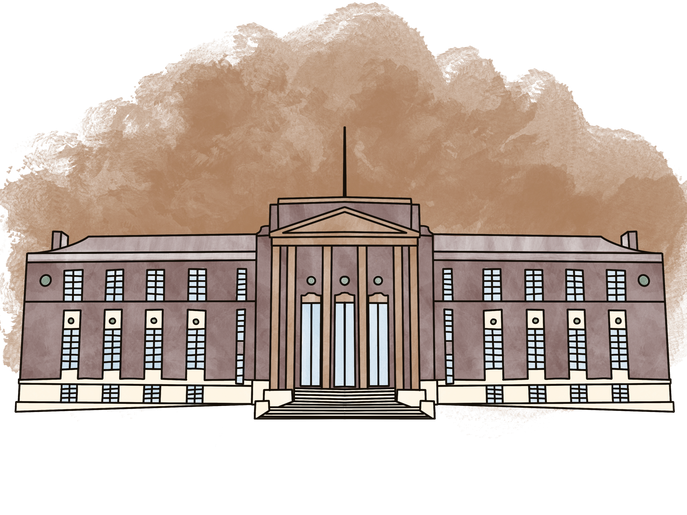Royal Australasian College of Surgeons
Location
Royal Australasian College of Surgeons (RACS), Spring Street, East Melbourne VIC, Australia
Access
Exterior – Free to view
Interior – Access may be restricted
Architectural History
The Royal Australasian College of Surgeons is of architectural significance as an important example of the civic work undertaken by the architects Leighton Irwin and Roy Stevenson in a Greek Revival style, which was adopted for a number of commercial and institutional buildings in the 1920s and 1930s. The quality of this particular design was recognised in 1937 by the awarding of the Royal Victorian Architects' Street Architecture Medal.
The building sits on a sandstone plinth and is constructed of brown bricks set in a Flemish bond with bands of black header courses. The brickwork has been designed to form subtle horizontal bands and recessed panels. The windows, with their small panes and fine architraves, are also formed into vertical panels to balance the brickwork bands. There is a string course at the first floor level. An elongated, pedimented sandstone portico, with square shaft columns, enhances the unusually tall facade and was the gift of prominent physician, A. E. Rowden White.
Social History
As one of Melbourne's principal institutions, it has played, and continues to play, a long and pivotal role in the development of Victoria's medical profession. The Royal Australasian College of Surgeons building is located on a triangular area of land that was reserved for the National School Board in 1852. The Model and Training Schools, built between 1854 and 1856, was the first building to occupy the site. It was demolished after eighty years to allow for the construction of the new college in 1934. Archaeological remains of the Model School built in the 1850s have a high potential to yield artefacts and other information about the school and its social history. The College remains dedicated to the training and ongoing education of surgeons as well as upholding the standards of excellence in surgical care. The College also houses a museum dedicated to the history of surgery in its various forms and boasts a substantial library as well as an art collection.
Prompts & Activities
Why do you think the architect used Greek influences in this building? How does it relate to its purpose, and the people who would have occupied it?
In comparison, how is it used today, and is this thinking still relevant? Or does the modern use of the building subvert its history?
How many of the mentioned Greek architectural elements can you see? Can you count columns or other design features? Which types of columns are used, and why do you think this is?
The ancient Greeks made foundational scientific discoveries that continue to inform medicine today. Are there any nods to this included in this building?
What is your favourite element of this building? Does it have interesting ornamentation? What part does this element play in the overall design of the building, and why might it have been included? You might like to draw your favourite components! Observational sketching is a great way to get a deeper understanding of something.
Explore other landmarks:
Hellenic Museum • State Library of Victoria • Glyn Davis Building • Immigration Museum • Temple of Boom • Parliament House • Shrine of Remembrance • Melbourne GPO • Nicholas Building • Eureka Tower • Greek Centre • Trades Hall • Former Mail Exchange • Collins St Baptist Church • Royal Australasian College of Surgeons • Emily McPherson College

